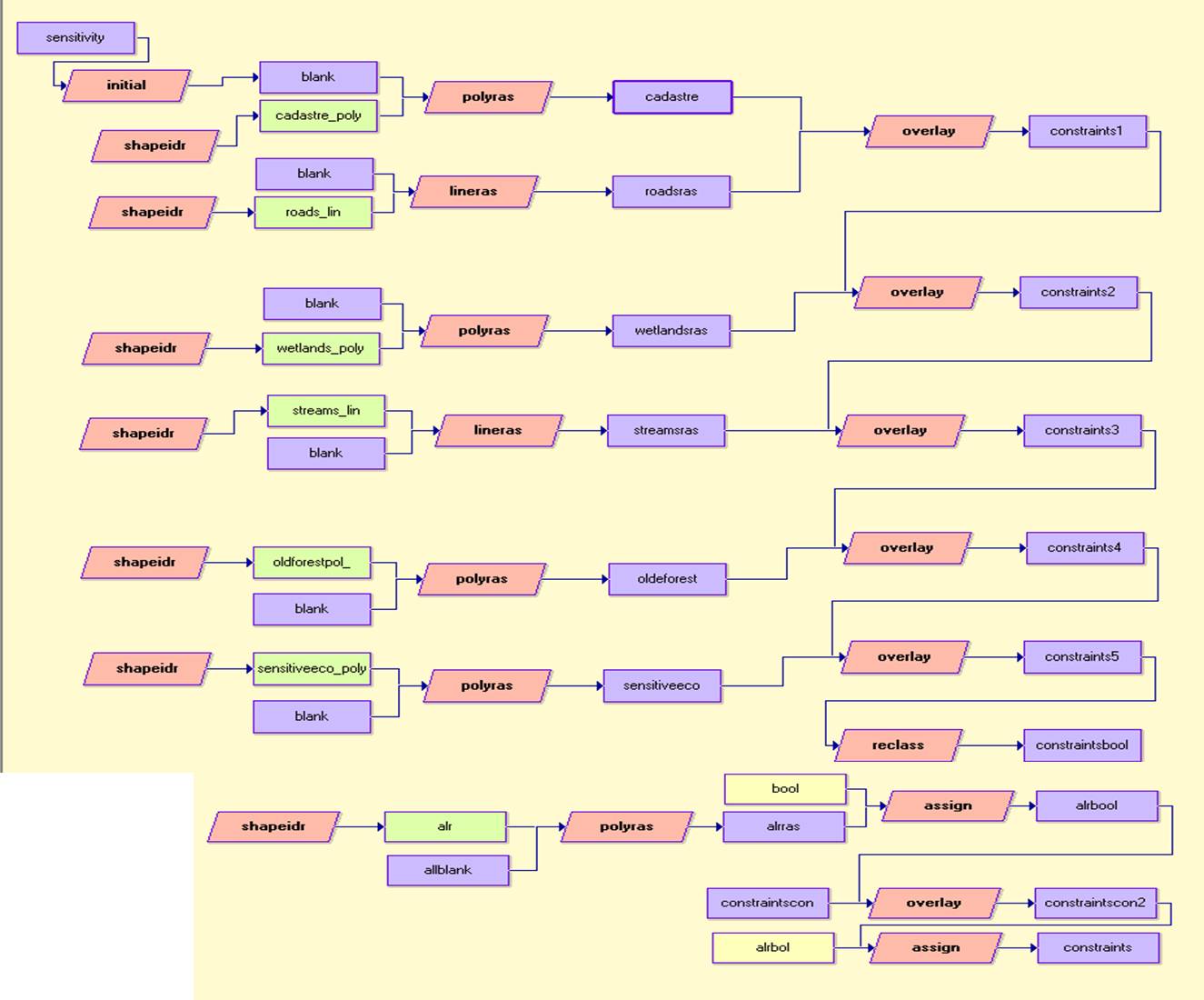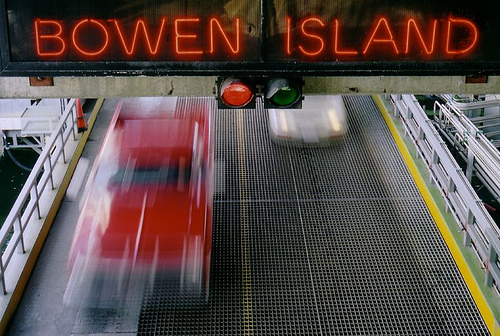Using IDRISI’s macro modeler, a visual environment which enables users to “program” a series of manipulations and functions, the imported data were reclassified and manipulated so as to be suitable inputs for IDRISI’s MCE modeler. With quantitative data this was accomplished by using the FUZZY function which rescales the image on a 0-255 scale, with 0 being the least suitable and 255 being the most suitable.
Each of the four analyses preformed involved the weighting of the factors using the analytical hierarchy process through the IDRISI module WEIGHT. Using this process, each of the factors is multiplied by a coefficient to make it less or more important to the analysis. The pairwise comparison screen used to identify values for the WEIGHT module for each of the four analyses are shown bellow, along with images showing the manipulations preformed on each layer and the procedures undergone to make the data comparable. Dividing the total analysis of these twelve factors into four subanalyses made it much easier to achieve acceptable consistency ratios (in all cases less than 0.l), making the pairwise process more meaningful.
 Constraints Macro Modeller Process Constraints Macro Modeller Process |

